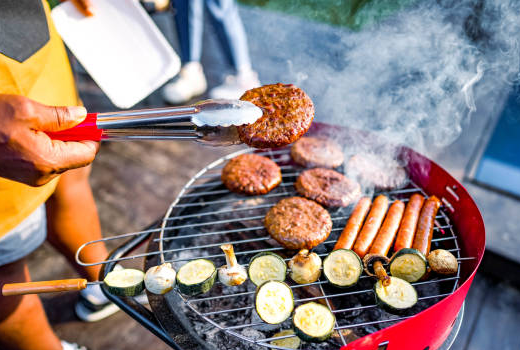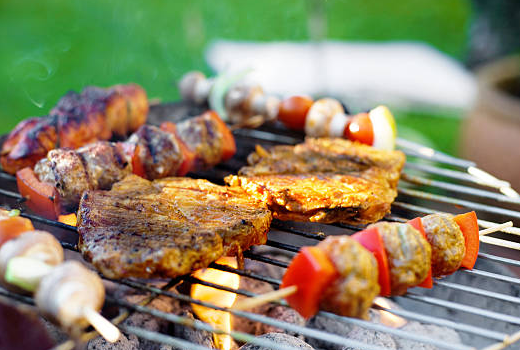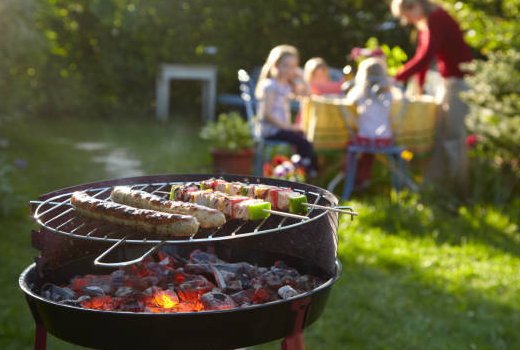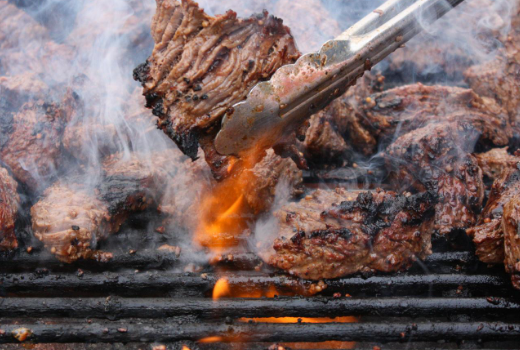Grilling Tips and Techniques

The Flaming Delight of Wonderful Pistachios Chili Roasted: A True Taste Adventure!
April 18, 2025
How to Make Applesauce
April 18, 2025Grilling is a fantastic way to cook, but many people struggle with it at home, leading to overcooked or burnt meat. Don’t worry—here are some tips that will make you a grilling pro in no time!
1. Skewering Techniques
Start by washing your meat and vegetables. Then cut the meat into 2-4 cm long and 0.8 cm wide pieces (or adjust to your preference). For ribs, cut them into blocks based on local pricing. For fish, scale it, remove the innards, and cut it into 12 cm pieces (or leave the whole fish). For lotus root, skewer it as it is. Use bamboo skewers to thread the items: meat should be skewered in a “T” shape, while larger items like fish and eggplants should use two skewers per piece.

2. Grilling Process
Step 1: Preparing the Fire
Start by cleaning the grill thoroughly. Before grilling, brush a thin layer of oil onto the grill grates to prevent food from sticking. Use a wire brush to remove any food residue during grilling, keeping the grill clean and ensuring the best flavor. Add charcoal—wood charcoal is the best choice for grilling, as it gives food a unique smoky flavor. Avoid using chemical charcoal. A good quality charcoal burns longer and with more heat. Always use smaller branches, not whole trunks, which are harder to ignite. When lighting the charcoal, add five starter cubes at a time. Wait for the charcoal to glow red-hot before spreading it evenly, about 1.5-2 cm thick. Don’t start grilling while the charcoal is still not fully lit, as this can cause dirty and burnt food.
Step 2: Grilling
Place the skewers on the grill. For meat and ribs, brush them with oil on both sides as they grill, turning them occasionally. Once you see bubbles forming and the meat turning white or yellow, it’s done. For chicken, listen for sizzling sounds, and when the skin turns golden and the juices stop running, it’s ready. Grill vegetables by placing them on the grill and brushing them with vegetable seasoning. Flip them regularly until they are softened and lightly charred, then season with chili powder and cumin. Note: Always use vegetable or canola oil, and avoid sesame or lard oils.
Step 3: Using the Brush
When you dip the brush in oil, make sure to remove any excess oil before applying it to the skewers. This ensures no oil drips onto the fire, causing smoke.
3. Grilling Times and Techniques
1. Grilling Meat Slices:
Thin slices of meat usually take only about 3 minutes to cook. Avoid overcooking as this will make the meat tough or burnt. Pork should be fully cooked, while beef should not be overcooked to preserve its tenderness.
2. Grilling Seafood and Fish:
Clams and fish fillets should be wrapped in aluminum foil to prevent the skin from burning and to keep the juices in. Grill them for 2-3 minutes, and when the fish rises and flakes, it’s ready.
3. Grilling Skewered Foods:
For foods like tempura, hot dogs, and sausages, use low heat. Avoid grilling vegetables directly on the grill; instead, place them in an aluminum foil tray to cook them through.

4. Key Grilling Techniques
Direct vs. Indirect Grilling
You may be wondering: isn’t grilling just about putting food over a fire? Not quite! There are two main methods:
A. Direct Grilling (Open Flame Grilling)
-
Place the charcoal in the center of the grill.
-
Place the food directly above the coals on the grill.
B. Indirect Grilling (Closed Lid Grilling)
-
Place the charcoal on either side of the grill.
-
Put the food in the middle of the grill.
-
Close the lid and adjust the air vents for better heat control. This method relies on smoking and indirect heat to cook the food.
2. Grilling Times and Heat Control
Grilling time and heat control are crucial to getting the best results. Generally, indirect grilling takes longer than direct grilling. The grill type, heat level, and the food you’re cooking all play a role in how the food turns out.
3. Assembling and Lighting the Grill
Before grilling, assemble your grill following the manual. Start by layering the charcoal in a pyramid shape, and light it with a fire starter. Let the charcoal burn for 10-15 minutes until the flames settle down and the heat is even.
-
After lighting the charcoal, wait for about 10-15 minutes until it burns down to a steady glow.
-
Place the grill rack above the charcoal and check the temperature by holding your hand above it—if it feels hot, it’s ready.
-
Arrange the food in the center of the grill, making sure it’s evenly spaced.
-
Adjust the food throughout the grilling process to ensure even cooking. If you’re grilling large pieces, like steaks, flip them after one side is cooked to avoid burning or undercooking.
5. Healthy Grilling Tips
Although grilled food is delicious, it’s important to be mindful of its health risks—especially regarding cancer-causing substances and digestive issues. But with a little care, you can enjoy both tasty and healthy grilled food.
Common Grilling Mistakes:
Mistake 1: Overcooking and Charring
Burnt food can contain carcinogenic substances, and when fat drips onto hot coals, it creates harmful compounds that stick to the food.
Solution: Wrap the meat in aluminum foil to prevent charring. If any part gets burnt, discard it immediately.
Mistake 2: Overusing BBQ Sauce
Marinating meat with soy sauce and then adding too much BBQ sauce during grilling can result in excessive salt intake.
Solution: Use low-sodium soy sauce for marinating, or dilute BBQ sauce with water before using it.
Mistake 3: Mixing Raw and Cooked Foods
Using the same utensils for raw and cooked food can lead to cross-contamination and foodborne illnesses.
Solution: Always use separate plates, utensils, and cutting boards for raw and cooked food.
Health Concerns:
Concern 1: Excessive Fat
Grilled meats are often fatty, and if you use fatty marinades, it can lead to excessive calorie intake.
Solution: Choose lean meats and high-fat fish like salmon. Include vegetables to balance the meal, and make sure to eat slowly and exercise after meals.
Concern 2: High Cholesterol, Low Fiber
Meat and seafood often have high cholesterol and low fiber content, which isn’t ideal for digestion.
Solution: Opt for more vegetables like zucchini, peppers, and citrus fruits, which are high in fiber and Vitamin C. These help lower cholesterol and promote healthy digestion.
By following these tips, you can enjoy grilling without sacrificing your health, making every BBQ a win for your taste buds and your well-being.



